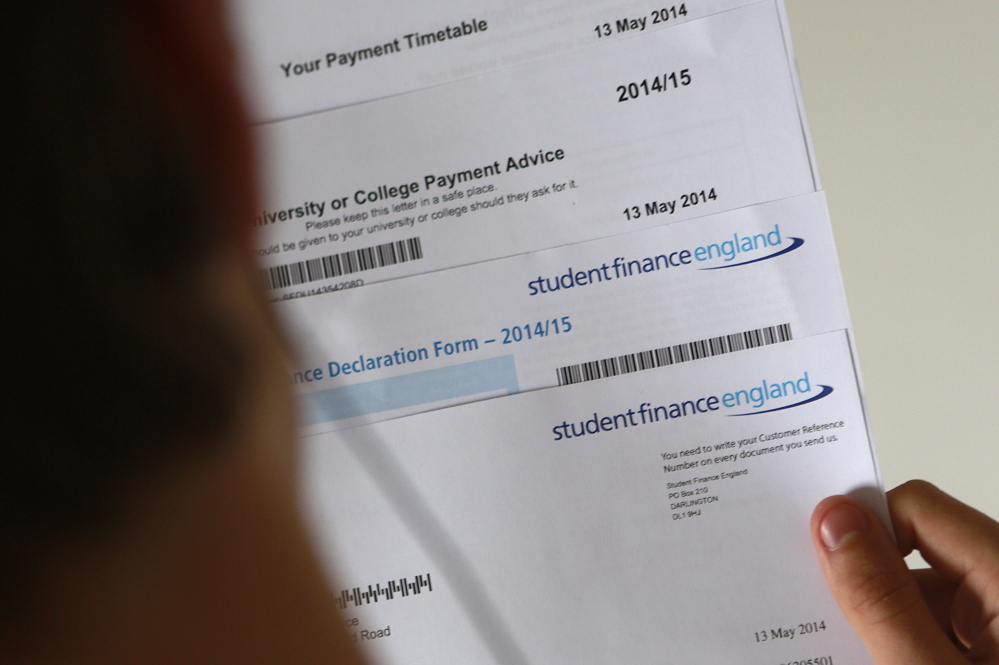It’s almost a given that anyone who wants to graduate from college today will have to take on a significant amount of debt.
And we all know why people are borrowing: College costs have grown dramatically while states have simultaneously backed off their level of support, putting more pressure on students to fill the gap. Meanwhile, families have fewer resources to pay college bills after decades of wage stagnation. That leaves borrowing as the only way most people can afford an education. Nearly 70 percent of recent graduates borrowed to pay for school, with average debt exceeding $30,000.
Demos, a liberal economic think tank, has looked at this situation from a different angle. If 70 percent of graduates are borrowing, that means 30 percent come out debt-free. Who are they, how did they do it and what does that say about American higher education as an engine of equal opportunity?
What the researchers found it is that our system gives a leg up to people who already had an advantage and puts a burden on those who were already behind.
Evening out that inequity should be the focus of much-needed reforms to higher education finance.
The study punches some holes in notions about why people take out loans to pay for education. Some commentators have argued that there are alternatives to excessive borrowing if students are willing to work after school and on vacations to limit debt.
While that might have been true 20 years ago, when less than half of graduates took out loans, it is not today. The Demos survey found that students who graduate debt free were less likely to have a job while they were in school than their indebted colleagues. They were also less likely to work more than 20 hours a week and less likely to hold down two or more jobs In other words, the more you worked while you were in school, the more likely you were to leave with debt.
Another myth is that low-income people get a free ride in college. Students who received Pell Grants, the federal program to help low-income students pay for college, were far more likely to graduate with debt than students who did not qualify for the program. This was especially true for independent students (those who pay for their own education without family help) with more than eight out of 10 independent Pell Grant recipients graduating with debt.
The need to borrow, the researchers conclude, is closely linked to race and income, with minorities, the poor and middle class having to carry a heavier load after graduation.
Two thirds of those who graduate without debt are dependent family members. Almost half of debt-free graduates come from families with an income of more than $100,000 a year – putting them in the top 15 percent of households. For them, a college degree can be considered an inheritance as well as an accomplishment.
And racial differences are also stark. At public institutions, 81 percent of black students take out loans to pay for their educations as opposed to 63 percent of whites.
That debt load will have a significant impact on those graduates, and even more on those who borrow for school and drop out short of a degree. It delays major life events, like getting married or buying a house. It limits the kinds of jobs graduates can take, steering them away from public service or low paid internships that could provide valuable experience.
Reducing the cost of attending college has been a major focus of the Obama administration’s education policy, and several positive changes have been made, including linking loan repayment schedules to income.
But if we are really interested in equal opportunity in this country, we should be looking beyond making loans more affordable when we reform the higher education financing system.
Debt-free graduation should not be just another advantage for those who are already wealthy. It should be the way we reward hard work and talent, and give student potential what it needs to flourish.
Send questions/comments to the editors.



Success. Please wait for the page to reload. If the page does not reload within 5 seconds, please refresh the page.
Enter your email and password to access comments.
Hi, to comment on stories you must . This profile is in addition to your subscription and website login.
Already have a commenting profile? .
Invalid username/password.
Please check your email to confirm and complete your registration.
Only subscribers are eligible to post comments. Please subscribe or login first for digital access. Here’s why.
Use the form below to reset your password. When you've submitted your account email, we will send an email with a reset code.